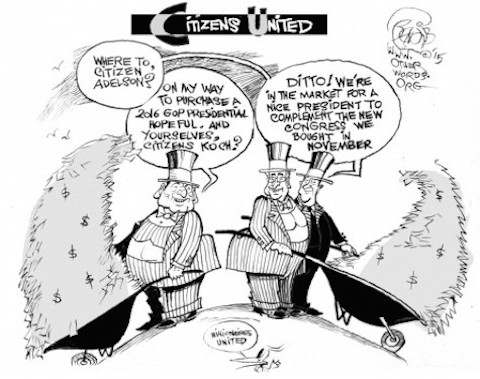Community colleges have traditionally responded to the financial needs of their students by removing or minimizing financial barriers to attending. Efforts to make community college tuition free fit with this philosophy. But where efforts to minimize or remove financial barriers to attending community college fall short is in empowering students to navigate the next financial crossroads they encounter, to make well-informed financial decisions that will decrease their vulnerability as students and to position them with the tools for achieving financial wellness as they progress through life.
Empowerment work that helps students manage their financial lives can be described as building their "financial capabilities." The intention of this work is to teach students effective money management, savings and planning techniques but also to provide opportunities to apply what students learn, which is critical to developing positive financial habits. More commonly referenced "financial literacy" remains relevant but is more often associated with knowledge transfer and skill development than application and behavior change. Empowerment work is intended to build students’ capacity.
While engaging with students in this way is new territory for most community colleges, it is an emerging area in which some institutions have already developed expertise and observed significant benefits. To illustrate, the Boston Fed’s Financial Capabilities Group describes the experiences and insights of eight community colleges from around the country in its new Community College Handbook, released as part of the group’s Community College Initiative.
The need to help students develop skills and confidence to manage their financial lives effectively, to provide real ways of doing this and to deliver services when students are most likely to have opportunities to put what they learn into practice is evident from the institutions’ experiences.
In one example, a financial aid staff member at a community college in Florida helped pilot a peer-to-peer effort over concern that while financial aid was relatively easy to come by, students lacked clear guidance on how the aid could best be utilized. The pilot began on a small scale, with three work-study students approaching peers leaving the financial aid office with their refunds, engaging them in discussions about plans for their refunds, and encouraging them to divide purchase decisions into “needs” versus “wants.”
This pilot grew to include a multicampus, well-funded Financial Learning Ambassador Program that delivered timely and tailored guidance on money management techniques through a peer-to-peer model. By identifying times when students are most likely to make financial decisions, staff and students implementing the program could ensure the relevancy and timeliness of content (e.g., demonstrating “shopping on a budget” and setting up resource tables around the time when financial aid refunds are dispersed).
Motivated by similar concerns for financial well-being, community colleges based in New Mexico and Baltimore County sought to address students’ financial needs beyond educational costs and identified comprehensive financial coaching as part of the solution. Staff at one institution observed that in addition to academic challenges, students were already struggling with day-to-day financial needs and therefore less able to plan for the future.
Likewise, many students attending community college in Baltimore County not only live below the poverty level but also lack tools to manage their finances. While one institution offers financial coaching as part of a comprehensive financial stability center model that bundles education and employment services, work and income supports, and financial and asset-building services, the other offers coaching only. The Handbook’s case studies go into depth on how the respective institutions decided which services to offer.
Two community colleges in Oregon and Arizona took a different approach. In an effort to address their students’ unmet financial needs and to help them develop positive financial habits, these institutions offer educational matched savings programs that match student savings at an established rate (e.g., 1 to 1 or greater). After meeting program milestones such as making a specified number of consecutive savings deposits and completing a certain number of hours of financial education classes or workshops, students can use their savings and matching funds to cover approved educational expenses such as tuition, fees, books, and supplies.
These programs have required concerted efforts by external partners, funders and institutional staff. In these cases, administrators and staff members committed to this level of collaboration because they saw the value in not only helping students pay for educational expenses but also to complete the program with much higher quality financial decision-making abilities than when they started.
These case studies along with others featured in the Boston Fed’s Handbook provide examples of new ways of responding to the financial challenges community college students face. The studies demonstrate how previous approaches to minimizing challenges—while well-intended—have not historically enhanced a student’s ability to independently overcome the next challenge they are likely to face.
The case studies describe just a handful of models for building students’ capacity for managing their financial lives. While we hope this might generate discussion and ideas among institutional personnel and potential partners, we also want to emphasize the need for more research to determine additional best practices. This is why the Boston Fed is evaluating a two-year multi-institutional pilot that combines educational matched savings programming, financial coaching and support systems to help students navigate the financial aid process.
We want to know if students who receive services demonstrate stronger educational outcomes, such as higher rates of persistence; and financial outcomes, such as improved decision-making surrounding paying for school and managing their financial lives, versus those who do not receive any services at all. We also want to understand the interplay of these outcomes and the extent to which a model of this kind could be scaled up.
In the meantime, we continue to advocate that community colleges commit to helping their students to manage their financial lives effectively. We have hosted a series of events that brought together expertsin-person and online, and we will be actively engaging community colleges in discussions tailored to their unique institutional contexts and student needs through on-site visits. One of our recent visits to an institution in Massachusetts, for instance, included a broad cross-section of institutional staff, faculty and students, and resulted in a rich discussion of possibilities for applying what we have learned to this institution’s unique context.
Institutions and the students they serve will be better positioned when students are knowledgeable, well-informed stewards of their financial lives and able to navigate financial systems as students, workforce participants, and members of society. The Resource Handbook is intended to make this case, demonstrate actual examples and observed benefits, provide insights into how to achieve effective delivery, and ultimately, to foster a shared belief of how working with students in this way is integral to their educational progress and future financial wellness.
Sarah Savage is community-affairs manager and Erin M. Graves is senior policy analyst in the Financial Capabilities Group at the Federal Reserve Bank of Boston. This piece originated on the Web site of the New England Board of Higher Education (nebhe.org).









